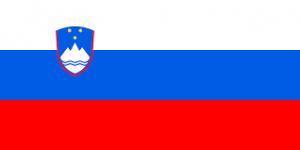Language/Slovenian/Grammar/The-subjunctive-mood-and-modal-verbs
As a Slovenian language teacher with 20 years of experience, I know that learning the subjunctive mood and modal verbs can be challenging for students. However, incorporating these grammatical concepts into your writing and speaking can take your Slovenian language skills to the next level. In this lesson, you will learn how to use the subjunctive mood and modal verbs in Slovenian, including the different forms, tenses, and applications in formal and informal writing.
The Subjunctive Mood
The subjunctive mood is used to express doubt, uncertainty, wishes, emotions, and hypothetical situations. In Slovenian, the subjunctive mood is formed by conjugating the verb in the third person singular or plural as if it were in the past tense, and then adding the appropriate subjunctive particle. Here are some common subjunctive particles in Slovenian:
- da - that
- če - if
- kadar - when
- čim - as soon as
- dokler - until
To use the subjunctive mood in Slovenian, follow these steps:
- Conjugate the verb in the third person singular or plural as if it were in the past tense
- Add the appropriate subjunctive particle
- Use the appropriate case depending on the context
Here is a table showing the different forms of the subjunctive mood in Slovenian:
| Slovenian | English |
|---|---|
| da bi šel | that he would go |
| če bi vedela | if she knew |
| kadar bi bila tam | when she would be there |
| čim prej bi izvedel | as soon as he would find out |
| dokler ne pride | until he comes |
Note that the subjunctive mood is used in formal writing, and is rarely used in everyday conversation. However, using the subjunctive mood correctly can show that you have a deep understanding of the Slovenian language and culture.
Modal Verbs
Modal verbs are auxiliary verbs that express modality, such as possibility, necessity, obligation, and permission. In Slovenian, the most common modal verbs are:
- smeti - may/might
- morati - must
- hoteti - want
- znati - can
To use modal verbs in Slovenian, follow these steps:
- Conjugate the modal verb according to the subject and tense
- Add the base form of the main verb in the appropriate tense and mood
- Use the appropriate case depending on the context
Here is a table showing the different forms of modal verbs in Slovenian:
| Slovenian | English |
|---|---|
| smem iti | I may go |
| moram zapisati | I must write down |
| hočem jesti | I want to eat |
| znam plavati | I can swim |
Note that modal verbs are often used in everyday conversation, and can convey nuances of meaning that cannot be expressed through other verb forms.
Applications in Formal and Informal Writing
The subjunctive mood and modal verbs are commonly used in formal writing in Slovenian, such as in academic papers, business correspondence, and legal documents. They can also be used in informal writing, such as in personal letters, poetry, and fiction. However, it is important to use these grammatical concepts appropriately and accurately, as overuse or misuse can make your writing sound unnatural or confusing.
To practice using the subjunctive mood and modal verbs in your writing, try the following exercises:
- Write a formal letter to a business partner expressing doubt or uncertainty about a proposal
- Write an informal email to a friend expressing a wish or desire
- Write a short story using both the subjunctive mood and modal verbs to convey a hypothetical situation
By incorporating the subjunctive mood and modal verbs into your writing and speaking, you can improve your Slovenian language skills and express yourself more accurately and effectively.
Related Lessons
- 0 to A1 Course
- Complex sentences and subordinations
- How to Use Have
- Conjugation of verbs in the present tense
- Conjugation of verbs in the past tense
- Adjectives
- Gender
- Adverbs and prepositions
- How to Use Be
- Cases

